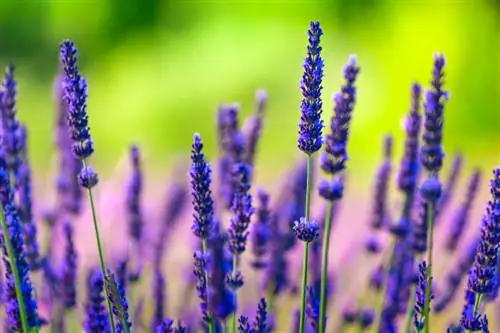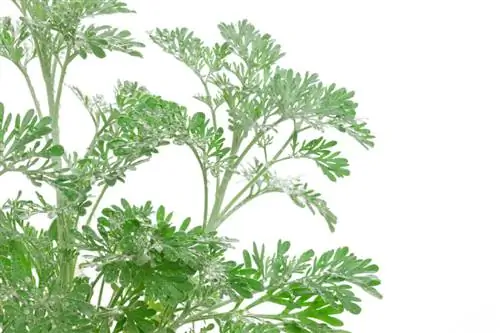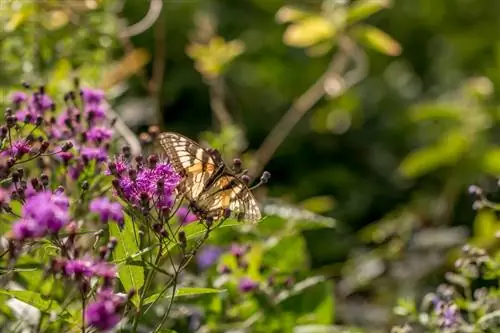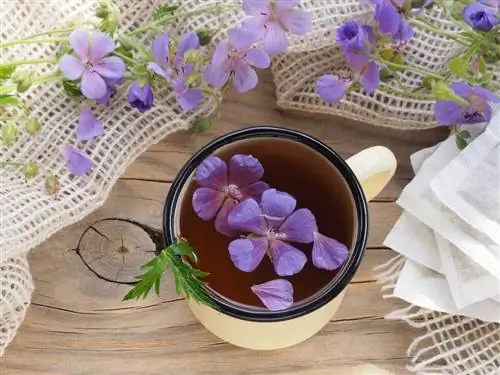- Author admin [email protected].
- Public 2023-12-16 16:46.
- Last modified 2025-01-23 11:20.
The real lavender (Lavandula angustifolia), popularly known as large or real snare, nard or spieke, is particularly valued for its aromatic scent and its pretty flowers. However, the plant can also be used to flavor many dishes (e.g. lamb) or as a fragrant bath additive.
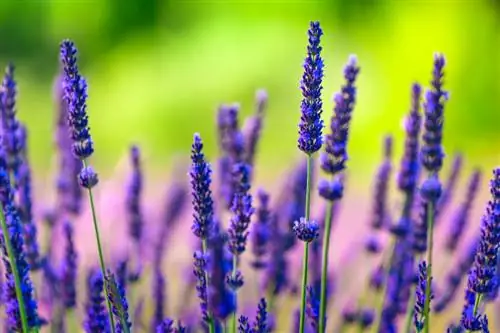
What is real lavender?
Lavender (Lavandula angustifolia) is an aromatic plant with blue or purple flowers that bloom from July to September. It comes from the Mediterranean countries and contains essential oils that have calming and antispasmodic effects. Lavender is also used in the kitchen to flavor dishes.
Botanical Profile
Lavender belongs to the mint family (Lamiaceae). Its taproot reaches deep into the ground. The plant forms a branched subshrub 30 to 60 centimeters high, the older branches of which are woody. The young shoots, on the other hand, are gray-green in color and square. Lavender has elongated, narrow, needle-like leaves that are silvery gray in color. This leaf color is an indication of the Mediterranean origin of lavender, because it serves as sun protection - similar to the silvery leaves of the olive tree. The fragrant blue or purple flower spikes appear on long stems from July to September.
Home and distribution
Lavender comes from the southern European Mediterranean countries, where it grows wild on rocky and dry slopes. Benedictine monks once brought the herb across the Alps; today it is native to numerous gardens in western and northern Europe as a scented and medicinal plant. The French Provence is particularly famous as the “Land of Lavender”, where a carpet of blue and purple flowers covers the landscape every year when it is in bloom.
Special varieties
Real lavender is available in different varieties and colors:
- Hidcote Blue (dark blue flowers, good for hedges)
- Blue Cushion (compact shrub)
- Munstead (early blooming)
- Miss Katherine (, late blooming, pink flowers)
- Rosea (also pink flowers)
- Alba (white flowering)
- Mailette (blooming richly and for a long time, strong aroma)
- Lady (compact shrub with lush flowers)
Ingredients and taste
The plant mainly contains plenty of essential oils. There are also tannins and bitter substances, flavonoids, coumarins and rosmarinic acid. Lavender has a calming, antispasmodic and nerve-strengthening effect. The scented herb has a well-known fresh, spicy scent. It tastes a little tart and bitter, similar to rosemary. Young leaf shoots are suitable as a distinctive seasoning for fish, poultry, stews, mutton, soups and sauces.
Historical Use
Although lavender is native to the Mediterranean countries, it did not play a special medicinal role in ancient times. Its name is derived from the Latin word for “wash”, “lavare”, as the clean Romans flavored their bath water with this herb. It was only beyond the Alps that lavender gained its fame and developed into a highly valued herb in various monastery and farm gardens. In past centuries, lavender was considered a type of protection against infectious diseases, for example because its scent kept disease-carrying lice away.
Tips & Tricks
Dried lavender bouquets have been placed in the linen cupboard since ancient times. They not only spread their pleasant smell there, but also drive away the moths.

